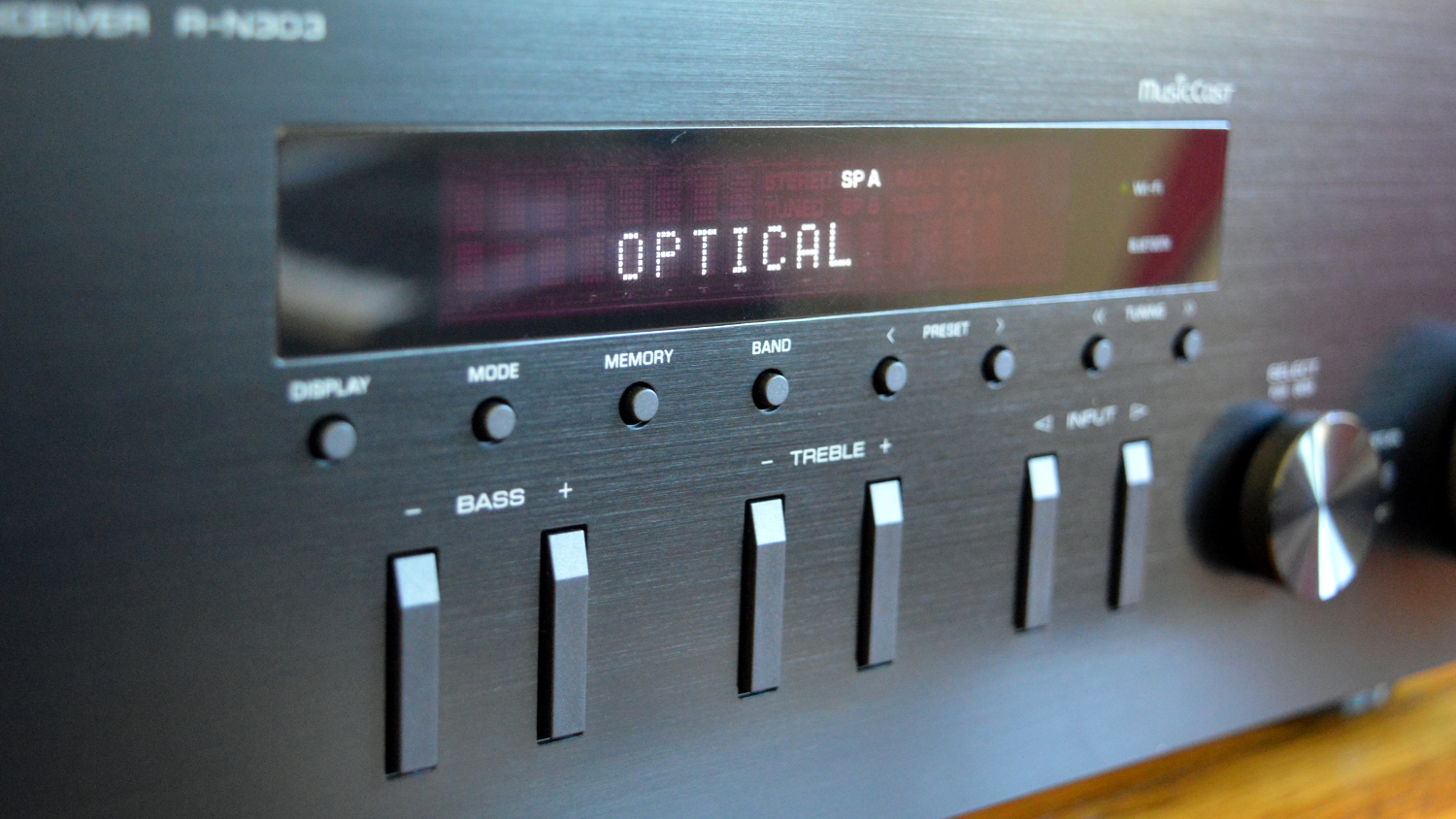TechRadar Verdict
The Yamaha R-N303 offers a ton of features at an excellent price. If you’re willing to deal with a few quirks, it’s absolutely worth buying.
Pros
- +
Easy to use
- +
Sounds good
- +
Range of connectivity options
Cons
- -
Wireless connectivity can be buggy
- -
No surround support
Why you can trust TechRadar
In an era of soundbars and built-in speakers, AV receivers seem to be getting less common. But that doesn’t mean they’re without use – allowing you to control multiple sources from one single remote, and control different sets of speakers for different uses.
That doesn’t mean, however, that they shouldn’t be refreshed every now and then. After all, in 2018 CDs are well and truly on their way out, as streaming services and wireless features become standard. Yamaha has tried to combine the classic AV receiver with modern functionality – and the result is the Yamaha R-N303. At $249/£299 it could be a pretty great deal, especially if it delivers on its modern features. Does it? We put the Yamaha R-N303 to the test to find out.
Design and setup

The Yamaha R-N303 is actually a very easy receiver to set up. Once you pull it out of the box, you’ll simply plug in cables connected to your speakers and sources. The receiver supports CD players or any other line input, as well as two sets of stereo speakers here. If you want surround sound, though, you’ll probably need to shell out a bit more cash for a receiver that can connect to all your speakers. The receiver also has an optical input, which is good news for those that want to connect their TV directly to the unit. You’ll want to make sure you have all the appropriate cables, but for speakers the unit supports both banana plugs and wire cables. And if you plan on using the unit for listening to the radio, you’ll want to connect the included antennas.
Once all your physical connections are set up, you can connect the device to your Wi-Fi network. This, unfortunately, is a step that we had a lot of trouble with. The first time we tried to set up the device, it got stuck trying to connect and wouldn't link to the app. After a chat with a Yamaha rep, we were able to reset the device and connect it to an iPhone – but still had trouble with an Android device. (We were told this is a rare occurrence.)
Either way, the system was thankfully still able to connect through Bluetooth – so even if you can’t get the MusicCast app up and running, you’ll still be able to play music from your phone.
In use

Using the Yamaha R-N303 isn’t too difficult, but it’s not the easiest affair either. Once you get used to how the remote works, you’ll be able to make your way around the interface pretty easily – and once everything is set up you’ll get into a routine of using the receiver.
The remote may look intimidating but, again, you probably won’t use all of the buttons. It’s broken down into a few different sections. Near the top you’ll control power and sleep mode, below which you’ll have input selectors – allowing you to choose where your audio is coming from. A bit further down you’ll have radio controls, a directional pad and selection buttons, menu buttons, and so on. It’s really not difficult to get used to, but it may take a few minutes to get your head around.
Last but not least is the MusicCast app, and if you can get it to connect it’s really quite nice. From the app you can turn the receiver on and off, and play music from some of the better-known music streaming services, or directly from your phone. As a Google Play Music user, it was pretty disappointing to find that some services weren’t supported, including Google Play Music and Apple Music, among others.
Connecting through Bluetooth and using the receiver as a Bluetooth device is pretty straightforward. You connect the same way you would any other Bluetooth device, after which you can play music from your phone, and use the remote to control playback.
Sound

Of course, perhaps the most important thing about the receiver is how it sounds, and we found it perfectly capable. As mentioned, the receiver supports stereo speakers – and really that’s all it supports. Not only can you not connect stereo speakers, but there’s also no support for a subwoofer – though that’s not entirely unusual for this price bracket.
The receiver offers two stereo 100W outputs with support for 96kHz 24-bit playback, and it sounds great. For true audiophiles, it may be worth investing in a slightly higher-power unit that supports both surround sound and a subwoofer. We found the unit delivered decent low-end through the speakers we were using, but the bass could certainly be boosted a little.
Verdict
For the price, the Yamaha R-N303 receiver is a very solid option. While there are some downsides, like the lack of surround sound and the buggy wireless setup, in general the receiver is pretty easy to use and sounds great. Perhaps the best thing about it, however, is how inexpensive it is – at $249/£299, you’d be hard-pressed to find another receiver that supports this many features.
- Best AV receiver: which should you buy?
Christian is a writer who's covered technology for many years, for sites including Tom's Guide, Android Central, iMore, CNN, Business Insider and BGR, as well as TechRadar.
